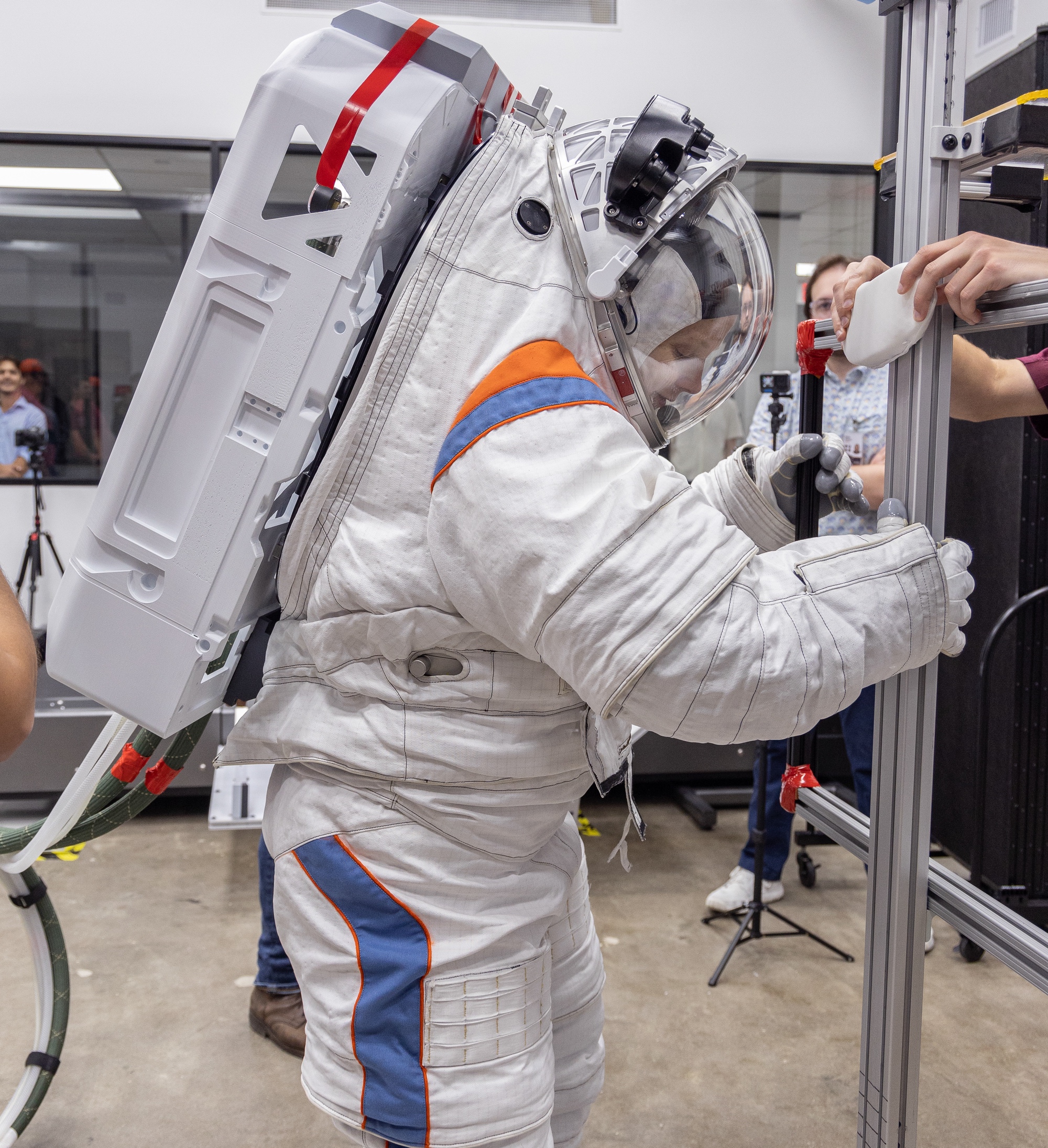WASHINGTON — Axiom Space is working with Nokia to adapt terrestrial wireless technologies to provide high-speed communications for the Artemis spacesuits Axiom is developing.
The two companies announced a partnership Aug. 21 to develop 4G/LTE communications technologies, called the Lunar Surface Communications System (LSCS), for the suits Axiom is developing for NASA for use starting on the Artemis 3 mission no earlier than late 2026.
The LSCS technology features two major components. One is a “network in a box” that includes a base station, antennas and other systems that will be installed on the Human Landing Services lander that delivers the astronauts to the lunar surface. The other will be a user module incorporated into Axiom’s suits.
The 4G/LTE communications will provide redundancy for existing links using UHF and Wi-Fi, as well as increased bandwidth. “From a suit perspective, we like this because it will give us a lot more capability and it gives is a little bit more redundancy in the communications,” said Russell Ralston, Axiom Space executive vice president of extravehicular activity, in an interview.
The integration of that technology into the suits will be seamless from the perspective of the astronauts wearing them, he said, with 4G/LTE being just one option for the astronaut to choose depending on mission requirements. However, it can enable much greater capabilities, such as the ability to stream high-definition video from cameras on the suit.
“From a scientific perspective, what it means is all of the scientists and geologists supporting the NASA mission in real time will have much better insight into what the crew is seeing,” he said. In addition, “I think people will connect with the mission a lot more closely when they can see it in such rich detail.”
The system is designed to operate at distances of up to two kilometers from the lander, a requirement set by NASA for the Artemis 3 mission, said Thierry Klein, president of Bell Labs Solutions Research at Nokia. “But we have tested the system in some configurations on terrestrial demonstrations that go beyond that.”
Nokia will first test its LSCS system on the moon on IM-2, the second robotic lunar lander mission by Intuitive Machines scheduled to launch late this year. That system will enable communications between the lander and both a rover developed by Lunar Outpost and a “hopper” by Intuitive Machines.
Klein said the success of that mission is not a prerequisite for using LSCS on Axiom’s spacesuits because of upgrades already planned for the future Artemis missions. “It’s very similar, but it’s not the exact same system,” he said. “Of course, we hope the IM-2 mission will be successful, but if it isn’t, it doesn’t have a direct impact on Artemis.”
Nokia is looking at later upgrades to LSCS to increase its range, particularly for future missions that will have astronauts driving a lunar rover. The company is also participating in DARPA’s LunA-10 study to examine how communications networks using that technology could enable a commercial lunar economy in the next 10 to 15 years.
Work on incorporate communications technologies into the Axiom suits is funded by a recent $57.5 million task order awarded by NASA as part of the agency’s Exploration Extravehicular Activity Services, or xEVAS, contract. NASA selected Axiom in September 2022 to develop a spacesuit for Artemis lunar landing missions with an initial xEVAS task order of $228.5 million.
Russell said Axiom is moving into the critical design review (CDR) phase of suit development, which will continue until early next year. “We’re approaching that point in time where the design is really solidifying,” he said, noting it was important to have the partnership with Nokia in place now so that the technology can be incorporated into the suits before the CDR is completed.
He said the company had completed “science projects” to answer key questions about the suit design. “At this point, we’ve answered all those questions and now it’s refinement and optimization as we get into the CDR phase,” he said. “We’re making tweaks here and there.”
Axiom was one of two companies that NASA selected for xEVAS contracts in 2022, with NASA awarding a task order to the other company, Collins Aerospace, late that year to work on a suit for International Space Station spacewalks. However, NASA and Collins announced in June that the company was halting work on that effort, effectively dropping out of the program.
Axiom has a small “crossover” task order under the xEVAS program to study how its Artemis spacesuits could be adapted for use on ISS. Russell said the company was beginning a preliminary design review of an ISS version of the suit.
He said Axiom is pursuing a “single suit architecture” that allows the suit to be used for Artemis or ISS missions with minimal modifications. “The suit can be deployed to basically any mission, and it may have a mission unique configuration,” he said, such as a different boot. “There’s very few changes other than that.”
Related
Read the original article here
